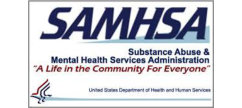Coalition History: The Urban Partnership of Miami-Dade County Coalition (UPMDCC) has it origin in the Urban Partnership of Miami-Dade County and Hosanna Community Foundation, Inc. The Urban Partnership (UP) is a collaborative of faith-based organizations and other providers from the Greater Brownsville/Model City/Liberty City community who joined together in 2010 to address the anti-social behavioral outcomes for children from the target area. Founding participants included indigenous community churches and community-based social service providers: Hosanna Baptist Church and Hosanna Community Foundation serving as the Lead, Children of Inmates, Inc, Dade Family Counseling Community Mental Health Center, Justice & Security Strategies, and The Miami Coalition for a Safe and Drug-Free Community (TMC).

Mission Statement
Target Population
Coalition
Risk Factors

The following are the indicators linked to an increased risk of substance use and abuse among youth (defined as an individual 18 years of age and younger).
Unemployment in this catchment is 22.8% (American FactFinder, United States Census, factfinder.census.gov). With a median household income of $21,539, 56.2% of the total households earn less than $25,000 per annum. Of the households present in this community, 38% are dwellings with children under 18 years of age. Of households with children, 42.2% live below the federal poverty level, 49% are female head-of-households with no husband present, and 31.5% are representative of grandparents responsible for raising their grandchildren. In female head-of-households with children, 45.6% live in poverty. In households where grandparents are responsible for raising their grandchildren, 47.5% live below the poverty level. Eighty-three percent of the households spend 25% or more on rent; 91.2% have lived in the same house for more than one year; 31.2% have no health insurance coverage.
Approximately 4,290 children live within this densely populated urban community, representing 30.5% of the total population of 14,055 persons; 72.7% are Black and 23.6% White with 27.6% Hispanic (15.7% speak English less than “very well”). Females are predominant in this community (87.1%) and males 12.9%. Of the population 25 years and over, 29.8% have less than a high school education, 42.2% high school diploma only (includes equivalency), and only 4.2% and 6.9% respectively have an Associate’s or Bachelor’s degree.
This community reports an estimated 655 violent crimes per 100,000, far above Florida’s average of 470 and the national average of 368 (www.neighborhoodscout.com). Brownsville’s assessed violent crime rate on a scale from 1 (low crime) to 100, is 96. Violent crime in this analysis is composed of four offenses: murder and non-negligent manslaughter, forcible rape, robbery, and aggravated assault. The U.S. average is 41.4.
As a reflection of youth substance abuse in Miami-Dade County, the 2012 Florida Youth Substance Abuse Survey surveyed 2,680 students grades 6 to 12. Of those sampled, 26.7% reported alcohol use in the past 30 days, 12.1% binge drinking, 11.4% marijuana or hashish, and 15.2% other illicit drugs. While lifetime trends in alcohol use have decreased from 2002 to 2012 (5.9%), alarming increases are being experienced in marijuana or hashish use (6.8%), and prescription medication abuse (4.3%). Nearly 20% of high school respondents said that they bought alcohol in a store, indicative of a lack of ID checks by merchants and potentially pro-social community norms associated with underage drinking. Of high school drinkers, the percentage of students drinking three or more alcoholic beverages per day on days when they drank in the past 30 days was 50.8%. Within the total cohort, 10.3% were suspended and 6.4% had attacked someone with intent to harm in the past 12 months. Of feeder pattern schools serving this community, 39% of the students were not promoted; 882 in-school suspensions were reported and 947 out-of-school suspensions; and 8.5% of the high school students dropped out of school in 2013-14 (DadeSchools.net, Assessment, Research and Data Analysis).
Coalition Survey and Statistics
How UPMDCC is Responding to These Risk Factors?UPMDCC using the SPF process provides prevention education through forums, presentations, community outreach, and informational mailings. In addition, the SPF for UPMDCC and Youth Board are undertaking a series of programmatic strategies to assist schools and families in helping youth to avoid problematic behavior:
UPMDCC Violence Prevention Initiative will be - A local replication of the Office of Juvenile Justice and Delinquency Prevention (OJJDP) Comprehensive Gang Model providing intervention and pro-social opportunities for high-risk or gang and other related involved youth. However, UPMDCC realizes the needs of the community served are larger than any one agency’s capacity and thus works to develop strategies to prevent educational failures, criminal and violence acts that seem to perpetuate among young people by creating a safer community. The creation of a safer community has its roots in prevention activities through a network of service providers align in purpose and core programming to include well thought out environmental strategies to increase the protective factors in the life of community youth.
UPMDCC programs and activities will incorporate the social development strategy, Strategic Prevention Framework, Community that Cares and OJJDP Comprehensive Gang Model and the developmental asset theory as guiding principles as it facilitate the community process of ones in community planning. The goals are the following:
- To develop a system of care that serves as a service network to facilitate positive youth development
- To develop environmental strategies that assists in the removal of barriers that hinder children in reaching their full potential.
- To develop coordinated and interdisciplinary service centers strategically located throughout the service area that combines education, social service and community building as core activities.
- To develop community education continuum that are supported through close coordination between educators, care givers and community supports.
- Community supports are interwoven where needed and guided by care coordinators who work with the family to identify and overcome barriers to providing a nurturing home environment in support of academic success.
- Volunteerism and community service are highly valued as community building tools.
- Door to door outreach is a key tool to engage parents and community.
- Caregivers/parents are equal partners in services and promoting educational values.
- Protocols and incentives reinforce the commitment to learning and successful outcomes.
- Services are culturally competent and child/family-centered.
The bottom for all program activities is to address risk and protective factors and to build youth resiliency.
Position Actions - An evidence-based communication training program designed to help students and parents develop empowering communication skills and behaviors and increase self -awareness, self-efficacy and personal and social responsibility.
Social Marketing - Campaigns such as Mobilizing for Alcohol Education=Options and Don't Drink Away Your Future are intended to increase public awareness to pressing community
Social Media - Our email-based Google group, UPMDCC Positive Youth Network, shares local news and events from greater Liberty City area organizations. UPMDCC SPF is also active on several social networks, including Facebook, Twitter and Instagram.
Strengthening Families Program 10 -14/Familias Fuertes 10-14 - National model, seven-week family strengthening program for parents and youth ages 10-14 that helps families reduce the risk for serious problems by guiding youth through the teen years.
We have much work to do; please join us in this effort.
SPONSORS:
- Substance Abuse and Mental Health Services Administration. (2009). Office of Applied Studies. Treatment Episode Data Set (TEDS): 2009 Discharges from Substance Abuse Treatment Services, DASIS.
- Budney AJ, Vandrey RG, Hughes JR, Thostenson JD, Bursac Z. 2008. “Comparison of cannabis and tobacco withdrawal: Severity and contribution to relapse.” J Subst Abuse Treat, e-publication ahead of print.
- National Institute on Drug Abuse . DrugFacts: Marijuana. Revised December 2012. (http://www.drugabuse.gov/publications/drugfacts/marijuana)
- Bartzatt, Ronald. March 2010. “Cannabis Toxicity and Adverse Biological Activity.” Research & Reviews in BioSciences: Vol. 4, Iss. 1.
- Tomar, Rajpal S., Beaumont, Jay, Hsieh, Jennifer. March 2009. Evidence of Carcinogenicity of Marijuana Smoke, California Environmental Protection Agency
- Reece, Albert S. 2009. “Chronic Toxicology of Cannabis.” Clinical Toxicology, 47, 507-524.
- Ibid. Bartzatt, R.
- National Institute on Drug Abuse, “Marijuana: Facts Parents Need to Know.” 2011. Available: www.nida.nih.gov/marijbroch/parents/001.php
- The National Household Survey on Drug Abuse (NHSDA) report. August 23, 2002. Available: http://oas.samhsa.gov/2k2/MJ&dependence/MJdependence.htm
- Office of Applied Studies, Substance Abuse and Mental Health Services Administration (SAMHSA). SAMHSA’s National Household Survey on Drug Abuse Report—Marijuana Use among Youths. July 19, 2002. Available at www.samhsa.gov/oas.nhsda.htm.
- Johnston, L. D., O'Malley, P. M., Bachman, J. G., & Schulenberg, J. E.. University of Michigan, 2011. Monitoring the Future Study
- M.H. Meier, Avshalom Caspi, et al. 2012. “Persistent cannabis users show neuropsychological decline from childhood to midlife.” Proceedings of the National Academy of Sciences

UPMDCC Newsletter/Drug & Alcohol Resources
Do you have a question for us? Is there anything we can do to help? Give us a call or send us a message online. Thank you for visiting the Urban Partnership of Miami-Dade County Coalition website.

















